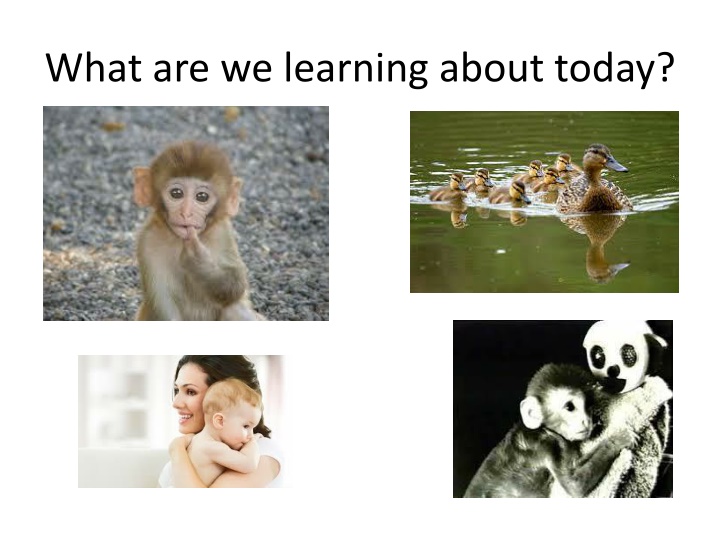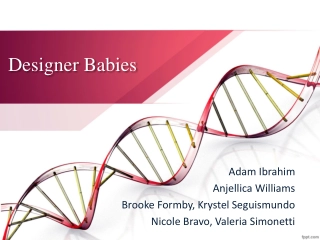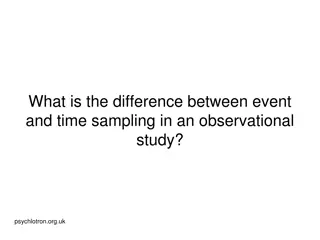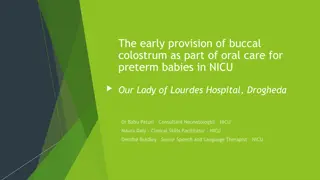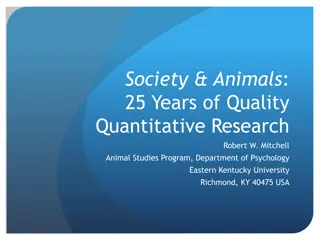Babies' Attachment Development & Animal Studies in Psychology
Babies' attachment development is studied through ethology, imprinting, and critical periods. Animal studies by Lorenz, Harlow, and others explore the impact of isolation and imprinting on behavior. Practical applications include orphaned goslings, sexual imprinting, and therapy for social deprivation. Listen to related radio shows for further insights.
Download Presentation

Please find below an Image/Link to download the presentation.
The content on the website is provided AS IS for your information and personal use only. It may not be sold, licensed, or shared on other websites without obtaining consent from the author.If you encounter any issues during the download, it is possible that the publisher has removed the file from their server.
You are allowed to download the files provided on this website for personal or commercial use, subject to the condition that they are used lawfully. All files are the property of their respective owners.
The content on the website is provided AS IS for your information and personal use only. It may not be sold, licensed, or shared on other websites without obtaining consent from the author.
E N D
Presentation Transcript
How do babies develop attachments? Lorenz Key terms: Ethology Imprinting Critical period
Real Life Application Orphaned goslings and micro-light aircraft Whooping cranes and micro-light aircraft Sheep farmers mother sheep Olfactory imprinting
Sexual Imprinting Lorenz (1952) case study a peacock raised in a reptile house had imprinted on a giant tortoises. As an adult this Peacock would attempt to mate display courtship rituals to giant tortoises. They had undergone sexual imprinting.
Harlow Variations Isolation studies newborn monkeys kept in isolation for 3, 6, 12 or 24 months. Monkey were psychologically disturbed. Fearful of other monkeys attacked them and harmed themselves. Rape rack female forcibly mated. When they became parents they abused their babies chewed off their feet, crushed their skulls.
Slucklin (1966) Duckling Sensitive rather than critical period. Imprinted a duckling who was isolated for 5 days after hatching.
Harlow & Suomi (1972) Therapy Isolated 4 newborn male monkeys for 6 months, Placed each with a normal monkey for two hours three times and week and increased contact. 12 months + their behaviour was normal. Total isolation is reversible.
Home Learning Listen to the radio show at www.bbc.co.uk/programmes/b00ly7lp you will also find programmes on Loftus and Palmer, Bowlby, HM and many other key psychology studies in this series.
3.2 Animal Experiments 1. Outline and evaluate animal studies of attachment. (12 marks) 2. Explain why Harlow s studies could be considered unethical? (4 marks) 3. What is meant by imprinting (2 marks) 4. Outline the procedure and findings of Lorenz s study into attachment. (4 marks) 5. Explain one practical application of Lorenz s research findings. (2 marks) 6. Do findings from animal experiments support the idea of a critical time period? (4 marks) 7. Give the case for and against Harlow s isolation study? (4 marks)
Animal Experiments: Real Life Spike is a Zookeeper. The police has asked him to look after a 45 day old orphaned monkey called Poppy who has been kept in a cage with a soft towel. 1. Based on Harlow s research how should the Zookeeper proceed. (6 marks)
